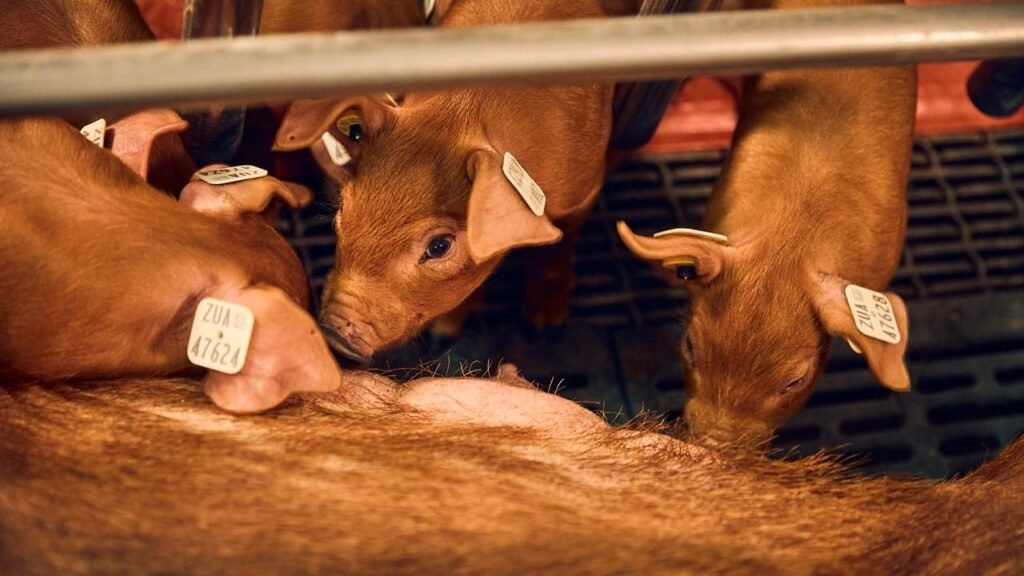Fighting PRRS: A Veterinarian’s Insight on the Battle Against Porcine Disease
Porcine Reproductive and Respiratory Syndrome, or PRRS, has become a familiar adversary in swine production settings since its initial detection nearly four decades ago. Encountering this virus often triggers subtle chaos; movement through herds is seldom uniform, and herd health can unravel through a series of not-quite-predictable failures—reproductive disappointments one week, then respiratory issues swelling a fortnight later.
Originating as an occasionally misdiagnosed collection of flu-like symptoms among piglets and reproductive setbacks in sows, PRRS manifests with relentless variability. Sometimes called “blue ear disease,” this malady owes much of its reputation to two persistently haunting clinical facades: reproductive debilitation—seen in abortions, weak farrowings, mummified fetuses—and respiratory compromise that flattens growing pigs’ performance.
A crucial aspect—often overshadowed by the more dramatic birth losses—is the syndrome’s proclivity for cohabiting with bacterial invaders like Streptococcus suis or even Salmonella Choleraesuis. These agents collaborate unkindly; secondary infections ride on the weakened immunity of affected pigs. Veterinarians observe a swift decline in growth for weaned animals when these combinations occur: daily gain can fall by 85%. Some facilities endure outbreaks lasting several months while others struggle chronically with postweaning pneumonia that raises mortality up to 25%.
Although many producers attempt to minimize infection risk through rigorous isolation and sanitation protocols—for instance scrupulously cleaning entryways or rotating feed bins—the virus itself is surprisingly tenacious. Its capacity for lingering transmission includes crossing placentas late in gestation (as early as second trimester) and infecting newborns who remain viremic well beyond their first weeks alive. Weak thumping sounds from afflicted piglets’ chests tell an evocative tale; severe interstitial pneumonia surfaces during necropsy alongside evidence of chronic underdevelopment.
Diagnostics challenge even experienced practitioners sometimes. While some herds suffer overt crashes—with sharp upsurges in stillbirths or unmistakable abortions—other groups drift asymptomatically until postmortem findings reveal extensive lesions inconsistent with other syndromes. It’s curious how disparate strains express themselves given essentially similar genome structures; North American genotype 2 versus European genotype 1 vary significantly enough that immune evasion must be considered less predictable than previously assumed.
There are moments when biosecurity efforts prove outstandingly effective at holding PRRS at bay. But complete exclusion? Not really plausible long-term—not where transport vehicles interface between multiple farms weekly or live animal trade persists globally each day. Swill feeding practices came into question not so long ago (practices mainly banned now), although evidence hinting substantial risk from pork meat movement remains debated among epidemiologists today.
Clearly management practices continue evolving as viruses morph genetically and spread into new geographies using unsuspected vectors—from seasonally migratory staff members to improperly sanitized equipment transferred between finishing sites unconsciously harboring virus particles beneath caked dust.
The disease’s profound economic repercussions often dominate discussions at producer meetings—annual losses hover around $560 million (sometimes reports suggest it might surpass $600 million). Nevertheless some debate whether these totals fully reflect hidden impacts such as fertility dips preceding observable outbreaks or latent reductions in carcass weight harvested months after apparent recovery.
A veterinarian walking alleyways during an outbreak will likely prioritize monitoring both acute respiratory patterns among young stock (“thumping”, sneezing) and subtle signs—a single sow presenting smatterings of agalactia may warrant reviewing prior service dates across many pens due to possible delayed onset syndrome effects present within group-housed systems.
Outbreak trends rarely cooperate tidily with expectations set forth by national surveillance programs either – seasonal upticks sometimes elude prediction models altogether if unusual local factors intervene (say mismatched weather overlays amplifying exposure windows). Oddly enough however, programs hinging upon open reporting tend to accomplish more robust containment when compared against closed data approaches…though uptake varies considerably depending on regional compliance structures enforced by veterinary authorities.
Notably vaccination forms part of control strategies but cannot singly eliminate endemic status once established within farm units prone toward repeated introductions—a case where “all-in-all-out” population flow designs perhaps deserve more aggressive revisiting within technical planning sessions than they currently receive.
Experience suggests the difference between devastation versus manageable loss hinges heavily on micro-level interventions just as much as big-picture policy shifts: quick identification of new cases using PCR assays coupled with prompt feedback loops between barn managers matter immensely—even nuanced modifications such as altering feed mixing sequences following suspicion may provide small but meaningful delays against concentrated herd-level spread… Or perhaps I overstate biosecurity’s reach there; after all, luck has saved more than one operation whose documented controls seemed lacking only weeks before their neighboring property suffered major clinical blowout events.
Ultimately few veterinarians expect total victory over PRRS anytime soon—not while multifactorial risks persist amid global travel flows coupling biology with economics unpredictably—but advances continue incrementally nevertheless; each round brings unexpected details challenging established logic while deposited lessons gather momentum for future defenses against this enigmatic viral enemy lurking amongst our most vital livestock populations.

